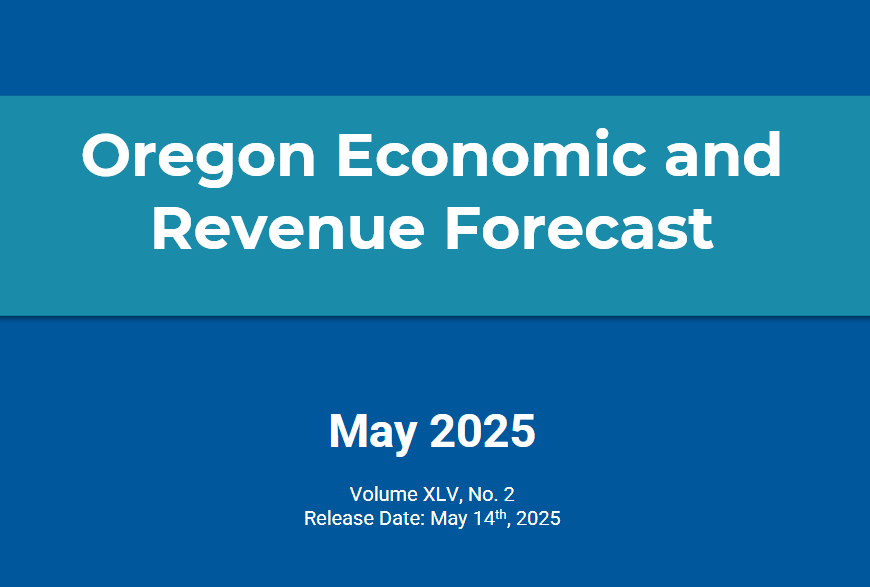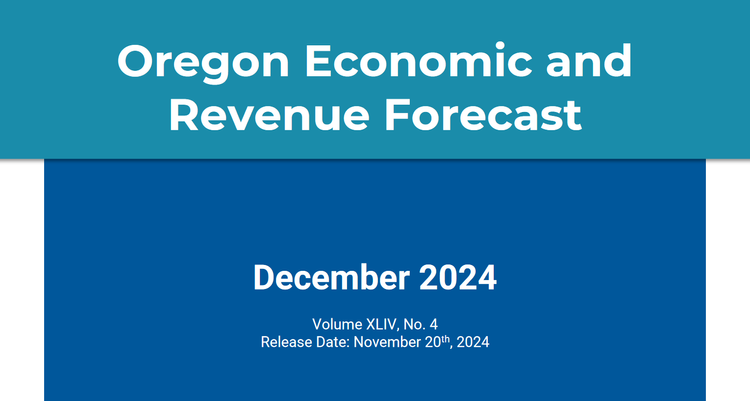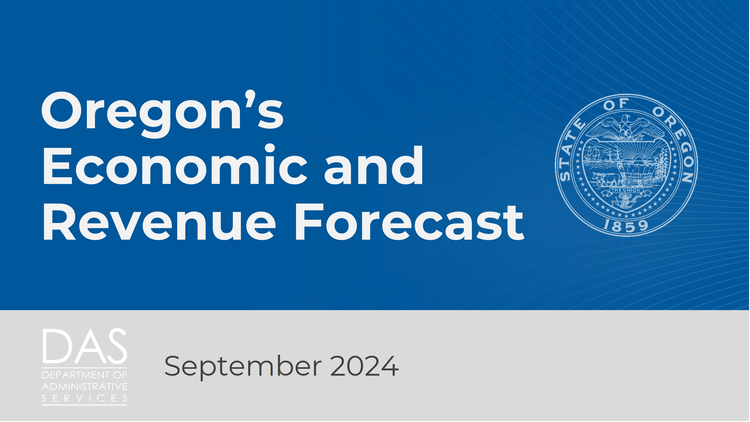Oregon's Revenue Forecast Defies Gravity

On Wednesday, the legislature’s tax-writing committees received the state’s latest quarterly economic and revenue forecast from the Oregon Office of Economic Analysis. The previous two forecasts featured the state economists warning lawmakers of an impending recession, generating great uncertainty for the tax and fiscal politics that play out towards the end of every session. While fears of a recession remain real, economists project a stabling of the economy and a short-term surge of revenues to feed the state budget as lawmakers enter the home stretch.
Oregon’s Economy, Labor Force Thriving
Oregon’s economic recovery has been faster and more inclusive than any other in recent memory, the state economists told the committees. Despite inflation becoming more persistent, at least in the minds of consumers, it is slowing, and federal monetary policy is beginning to ease interest rate hikes. The full impact of those hikes has not fully hit the economy and may not for some time. Economists, including the Oregon economists, called for a recession to hit by now, but that has not been the case.
Recessionary risks remain very real. Historically, inflationary booms do not end well and this one is coupled with an unusual set of economic factors in the driver’s seat, such as incredibly high savings rates during the pandemic. A recession will come at some point down the road; it is just a matter of timing. State economists dread forecasting a downturn in the economy, especially during the last forecast before lawmakers craft a budget, so the forecast seems to assume it will occur toward the end of the budget cycle, saving the painful revenue impacts for another day.
Migration Trends to Remain a Big Obstacle
Oregon’s population trends are not following the business cycle for the first time in modern history. Usually, the state’s migration patterns slow during recessions and swell in expansions. The state’s advantage has been attracting and retaining younger, working-age households. These migrants tend to feed Oregon’s economy and revenue streams. That is not the case with the economy today. The state faces a slowing birth rate and growing population without those migrants coming to Oregon.
In their written report, the state economists discuss the need to devise an “alternative scenario,” where they model the state’s economy and revenues if migration does not rebound and negative population growth becomes the norm. The economists write the decline is unlikely to be drastic but, rather, gradual over time as deaths outpace births and migration.
Oregon Revenues Outstrip Expectations
The state’s primary taxes performed much stronger than the economists previously anticipated after a stronger-than-anticipated tax filing season. During the pandemic, the economists believed the state was experiencing a short-term influx of revenues that would quickly dissipate after federal pandemic relief ended and consumers spent their built-up savings. That has not been the case. In fact, the economists now believe the state’s taxes, especially the income tax, are more effective than previously thought.
And this is where inflation comes into play. Oregon is one of only a handful of states that does not adjust all income tax brackets to inflation. Technically, the personal income tax is adjusted for inflation for all but the top income tax rate of 9.9 percent, which starts at $125,000. Oregon also does not index its corporate income tax to inflation. This means the income tax, the state’s primary source for raising revenues, captures significantly more money during inflationary periods, which is the case today.
It should be noted the economists refined their modeling to better account for inflation, interest rates, and federal tax law changes heading into this forecast. Besides accounting for inflation in the personal income tax, the economists are also changing how they forecast corporate tax revenues. In particular, the economists said the Tax Cuts & Jobs Act of 2017 has a more profound and long-term impact on state revenues than previously anticipated. Originally, the economists believed the federal tax law changes would result in a short-term broadening of the state tax base, but the reality has become much more permanent. Over the last few years, the historical relationship between corporate profits and taxes diverged, where tax payments are now outpacing gains in profitability. The economists attributed some of this to companies recognizing more of their earnings in the United States, making them taxable for federal and state income tax purposes. Now, five years later, the trends seem to be sticking, and the economists are projecting prolonged growth for the corporate income tax.
In many ways, the state’s positive revenue outlook is a story told in the rearview mirror, with very strong tax collections occurring last year and at the end of the budget cycle. The economists project personal income taxes to be $5 billion higher than anticipated for the budget cycle ending on June 30, 2023. Similarly, the corporate income tax is slated to raise $1.8 billion more than expected. We have known for some time the personal and corporate income tax kickers would trigger this biennium. And accordingly, the new revenues in the forecast result in historically high refunds of $5.5 billion (personal) and $1.2 billion (corporate).
Making Sense of It All
Oregon’s forecast provides lawmakers some breathing room for crafting the next budget. The question that seems to come regularly, however, is how much? Typically, the state economists provide a clear number for the available new funds lawmakers have at their disposal for writing their next budget, but that figure was left out of the presentation and supporting documents. The ambiguity is raising questions and causing angst from lawmakers and lobbyists. Oregon’s tax collections are booming, but with the kicker part of the picture, how strong are the usable revenues? That is a question we are still trying to find an answer.





